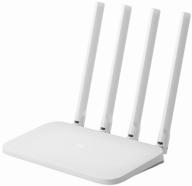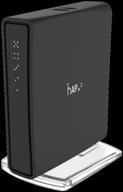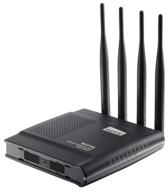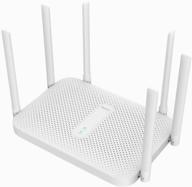
Review on 📶 KuWFi Outdoor CPE WiFi 300Mbps 2.4G Waterproof CPE 1W High Power 3 Kilometer Long Range Wireless Outdoor AP Access Point CPE with POE Adapter & 15dBi Antenna Long Range and LED Display (2 Units) by Kristopher Tight

I love it. now that it works. so.
It wasn't easy because the instructions that came with it are sooooo far away. This is the only reason for the 4 star rating. Finally (after emailing support and getting a very quick response) I got this to connect from a metal roofed house to a metal building. My signal shows up as VERY STRONG on a metal building about 1000 meters away. I haven't tested how far it sends yet. I will edit this post next week. The following instructions are for setting up your wireless network to act as a repeater (range extender). Connect the Ethernet cable to the device on the right (WAN/LAN port). The PSU is on the left when viewing the PSU pins down. (POE) Now you need to change the settings of your computer's wireless internet adapter. You can access it in Windows 10 by clicking Windows > Settings > Network & Internet > Status on the left (when connected to your home WiFi) > change adapter settings on the right > right click on the Wi-Fi adapter and select Properties > check the TCP/IPv4 option > click Properties. Disable automatic IP address. , then check the "Use the following IP address" box and enter the following numbers: 192.168.1.1. 188.20 Click once on the next row and it will be filled in automatically. Click "OK" > "OK" and come back from all these windows. Connect the device to the mains and press the reset button for approx. 15 seconds. Wait a moment for it to restart and you should see Wireless 2.4G in the list of networks. Click once and choose Connect. (wait patiently) When asked for a password, it is 66666666. Open your internet browser and type 192.168.188.253 in the address bar. Log in as an administrator with the root password. Click the "Master" button at the top. This will take you to the next screen and you will see the different modes. Click Repeater Mode. On this screen, press the AP Scan button and enter the information for your home wireless network that was not filled in automatically. Make sure the WDS Passthrough checkbox is NOT checked. It may take up to 5 minutes for the settings to be saved. When this is done, close the internet. Now Wireless 2.4G is not listed. Connect to your original WiFi and enter 192.168 in the address bar. 188.253 (If prompted, log in the same way as before.) (Select Admin and pw - root) At the bottom of the next screen are four squares. Click on the second square labeled "Wireless Settings". Click to enable it, then click Apply. Name your SSID whatever you want, make sure Broadcast SSID and WMM are enabled. Select the encryption type and password for the original Wi-Fi network, click "Apply" and wait patiently for saving. You don't have to wait more than 5 minutes. In this case, simply close the web window. Go back to your network settings in the same way as in the beginning and disable "Use the following IP address" by checking the "Obtain an IP address automatically" checkbox. You should now be able to connect to the new Wi-Fi connection you just created (using the same information as for your regular Wi-Fi, from as far as possible depending on your setting. Fi to Wi -Enable Fi on the device (Support didn't tell me anything about this part) EDIT: Now that I've been using this device for a few days I still love it, given the distance of the signal in open line of sight I don't have one Doubt that it's broadcasting fine, at least at close range if that distance isn't severely restricted I live on a mountain between two high hills in a house with a metal roof and there are a lot of trees nearby Until I come across one of these up signal is good up those hills signal is more than a quarter mile long Still only a 4 star rating until the instructions provided are corrected properly.
- As everyone has done so far
- Approximately
New products
Comments (0)
Top products in 📶 Wifi Routers
Another interesting products
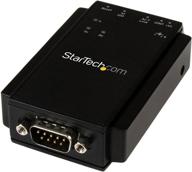
🔌 StarTech.com NETRS232 Serial to IP Ethernet Device Server - DIN Rail Mountable - Serial Device Server - Serial Over IP Device Server (Black)

4 Review
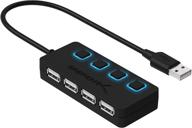
HB-UMLS Sabrent USB 2.0 Hub with 4 Ports and LED Power Switches for Each Port

12 Review
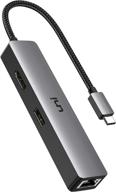
🔌 uni USB C Hub with Ethernet Adapter, 4K HDMI, Gigabit Ethernet, and 3 USB 3.0 Ports for MacBook Pro, iPad Pro, XPS

11 Review

UGREEN USB 3.0 Ethernet Adapter Hub with RJ45: Fast Gigabit Ethernet Converter, 3 Ports USB 3.0 Hub Compatible for MacBook, iMac, Surface Pro, Chromebook, Laptop, PC

11 Review


